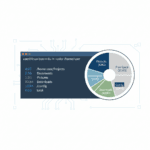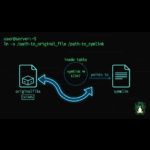I wasted three years putting money in the wrong retirement account. Not because I’m an idiot, but because nobody explained the actual difference between a Roth IRA and a traditional IRA in a way that made sense for my situation.
Here’s the thing: choosing between these two isn’t about which one is “better.” It’s about which one costs you less in taxes over your lifetime. And if you pick wrong, you could be leaving tens of thousands of dollars on the table.
Let me break down everything you need to know without the financial advisor jargon.
The One Difference That Actually Matters
Forget everything else for a second. The core difference between a Roth IRA and a traditional IRA comes down to one question: when do you want to pay taxes?
With a traditional IRA, you get a tax deduction now. You contribute $7,000 today, and that reduces your taxable income by $7,000 this year. Sounds great, right? The catch is you’ll pay ordinary income tax on every dollar you withdraw in retirement.

With a Roth IRA, you pay taxes now. You contribute $7,000 of after-tax money, so no deduction this year. But here’s the beautiful part: every dollar you withdraw in retirement is completely tax-free. Zero taxes on the gains.
I started with a traditional IRA because I wanted that immediate tax break. What I didn’t understand was that I was in the 12% tax bracket at the time. I was saving 12% on taxes now, but I’d likely be paying 22% or higher when I retired and started withdrawing.
That’s a bad trade.
The 2025 Contribution Limits You Need to Know
For 2025, both Roth and traditional IRAs have the same contribution limits:
- Under age 50: $7,000 per year
- Age 50 and older: $8,000 per year (that extra $1,000 is the catch-up contribution)
Here’s what trips people up: that $7,000 limit is combined across all your IRAs. You can’t put $7,000 in a Roth and another $7,000 in a traditional. You can split it however you want, but the total can’t exceed $7,000.
I learned this the hard way when I tried to max out both accounts in 2022 and got a nice letter from the IRS explaining the 6% excess contribution penalty. Don’t be like me.
Income Limits: The Roth IRA Trap
Traditional IRAs don’t have income restrictions for contributions. Anyone with earned income can contribute. The question is whether you can deduct that contribution, which depends on your income and whether you have a retirement plan at work.
Roth IRAs are different. There are hard income limits:
For 2025, if you’re single and your modified adjusted gross income (MAGI) is over $165,000, you can’t contribute to a Roth IRA at all. Between $150,000 and $165,000, you can make a reduced contribution.
For married couples filing jointly, the phase-out range is $236,000 to $246,000.
When I started making more money, I hit this limit and freaked out. That’s when I learned about the backdoor Roth IRA strategy, where you contribute to a traditional IRA and immediately convert it to a Roth. It’s perfectly legal, just a bit more paperwork.
When You Should Choose a Roth IRA
Pick a Roth IRA if any of these apply to you:
You’re early in your career. If you’re in a lower tax bracket now (12% or 22%), paying taxes on contributions today is a bargain compared to what you’ll pay later. Compound interest will turn that $7,000 into way more than $7,000 by retirement, and you’ll owe nothing on the gains.
I wish I had understood this at 25. I would have gone all-in on Roth contributions when my income was lowest.
You expect to be in a higher tax bracket in retirement. This seems counterintuitive, but think about it. If you’re aggressive about saving and investing, you might have more income in retirement than you do now. Between Social Security, pension income, required minimum distributions from traditional accounts, and other investments, you could easily be in a higher bracket.
You want flexibility. Roth IRAs let you withdraw your contributions (not earnings) anytime, tax-free and penalty-free. This isn’t something you should plan to do, but it’s nice to have access to that money if life goes sideways. Traditional IRAs hit you with taxes and a 10% penalty on any withdrawal before age 59½.
You hate required minimum distributions. With a Roth IRA, there are no RMDs during your lifetime. Your money can sit there growing tax-free for as long as you want. Traditional IRAs force you to start taking distributions at age 73, whether you need the money or not.
When You Should Choose a Traditional IRA
Go with a traditional IRA if:
You’re in a high tax bracket now. If you’re currently in the 24%, 32%, or higher tax bracket, that immediate deduction is valuable. You’re essentially getting a guaranteed return equal to your tax rate on every dollar you contribute.
When I got a promotion that pushed me into the 24% bracket, I started splitting my contributions between Roth and traditional to capture some of that tax savings.
You expect lower income in retirement. Most people do fall into lower tax brackets when they retire. If you think you’ll be living on less in retirement than you make now, paying taxes later at that lower rate makes sense.
You need the deduction this year. Sometimes you need to reduce your taxable income right now. Maybe you’re on the edge of a tax bracket, or you want to qualify for certain tax credits. The traditional IRA deduction can help with that.
You’re planning early retirement. If you’re serious about retiring before 59½, traditional IRA conversions can be part of a strategy called a Roth conversion ladder. You systematically convert traditional IRA money to Roth, pay the taxes, wait five years, then withdraw penalty-free. It’s more complex, but it works.
The Mistakes That Cost People Thousands
After talking to friends and reading countless Reddit threads, I’ve seen the same mistakes over and over:
Not contributing at all because it’s too confusing. This is the worst mistake. Even if you pick the “wrong” account, you’re still getting tax-advantaged growth. Find room in your budget and start contributing to one of them. You can always adjust later.
Choosing based on what your parents did. Your parents’ tax situation isn’t your tax situation. Their income, their retirement plans, their tax bracket – none of that applies to you. Make your own decision based on your circumstances.
Forgetting about employer retirement plans. If you have a 401(k) at work, max that out first (especially if there’s an employer match). IRAs are supplemental retirement savings. Don’t skip the free money from your employer to fund an IRA.
Not building an emergency fund first. Before you worry about Roth vs. traditional, make sure you have 3-6 months of expenses saved in cash. Retirement accounts aren’t emergency funds, even though Roth IRAs let you withdraw contributions.
Trying to time your contributions. Don’t wait until December to contribute. The earlier you put money in, the longer it compounds. Dollar cost averaging throughout the year is better than trying to pick the perfect moment.
My Personal Strategy (And Why It Might Not Work for You)
Right now, I’m doing a mix. About 60% of my retirement contributions go to Roth accounts (Roth IRA plus Roth 401k), and 40% goes to traditional accounts.
Why? I’m in the 24% tax bracket, which is high enough that the deduction feels valuable, but I also believe tax rates will be higher in the future. I’m hedging my bets.
When I was making $45,000 a year, I should have gone 100% Roth. When I’m making $300,000+ (hopefully someday), I’ll probably shift more toward traditional to capture those tax savings at higher rates.
The key is to reassess every few years as your income changes.
Advanced Strategies Most People Don’t Know About
If you’re serious about maximizing your retirement savings, here are some moves the pros use:
The Backdoor Roth IRA. If you make too much to contribute directly to a Roth IRA, contribute to a non-deductible traditional IRA and immediately convert it to a Roth. This works if you don’t have other traditional IRA balances (because of the pro-rata rule), but it’s a legal way around the income limits.
The Mega Backdoor Roth. If your 401(k) allows after-tax contributions beyond the $23,500 limit, you can contribute up to $70,000 total for 2025 and convert that to Roth. This is an insane amount of tax-free retirement savings, but most plans don’t offer it.
Roth conversions in low-income years. If you take a sabbatical, lose your job, or have a gap year between careers, that’s a perfect time to convert traditional IRA money to Roth. Your income is low, so you’re paying tax at a lower rate on the conversion.
I actually did this in 2020 when COVID hit and my freelance income dropped by 60%. I converted $15,000 from my traditional IRA to Roth while I was in the 12% bracket instead of my usual 24%. That decision will save me thousands when I retire.
Understanding Required Minimum Distributions
One of the biggest differences between Roth and traditional IRAs shows up decades from now: required minimum distributions.
Starting at age 73, traditional IRA owners must withdraw a minimum amount each year based on IRS life expectancy tables. Miss an RMD, and you face a 25% penalty on the amount you should have withdrawn. This forces you to take taxable income whether you need it or not.
Roth IRAs have no RMDs during your lifetime. Your money can keep compounding tax-free until you die. Then your heirs get up to 10 years to withdraw it (still tax-free for them).
This difference matters more than most people realize. If you build a large traditional IRA, those forced withdrawals in your 70s and 80s can push you into higher tax brackets. Combined with Social Security and maybe pension income, you could end up paying 22% or 24% tax on money you saved taxes on at 12% or 22% earlier in life.
That’s why I’m increasingly favoring Roth contributions even though I’m in a higher bracket now. The flexibility to avoid RMDs is worth a lot.
What About the Roth 401(k)?
Many employers now offer Roth 401(k) options alongside traditional 401(k) plans. These follow the same tax logic as Roth IRAs – you contribute after-tax money, and withdrawals are tax-free in retirement.
The advantage of a Roth 401(k) over a Roth IRA is the contribution limit. For 2025, you can contribute up to $23,500 to a Roth 401(k) ($31,250 if you’re over 50), compared to just $7,000 for a Roth IRA.
There are no income limits on Roth 401(k) contributions. High earners who can’t contribute to a Roth IRA can still use a Roth 401(k).
My strategy is to max out my Roth 401(k) first, then contribute to a traditional IRA if I want that tax deduction. This gives me a large tax-free bucket for retirement while still getting some current-year tax savings.
The Bottom Line: Which One Should You Choose?
If you’re under 35 and making less than $75,000, go Roth.
If you’re over 50 and making six figures, traditional probably makes more sense.
If you’re somewhere in between, consider splitting your contributions to hedge your tax bets.
But honestly? The best choice is the one you’ll actually stick with. Pick one, set up automatic contributions, and let compound interest do its thing. You can always adjust your strategy as your life changes.
I spent years overthinking this decision and missing out on years of compound growth. Don’t make that mistake. Open an account, fund it, and move on with your life.
The difference between Roth and traditional matters, but the difference between contributing and not contributing matters way more.







